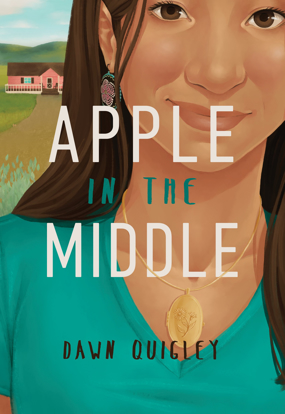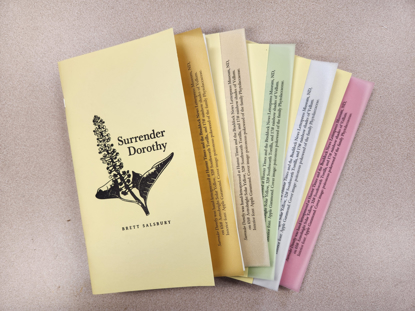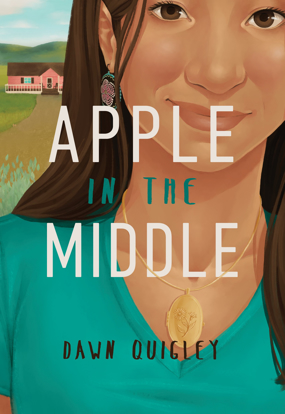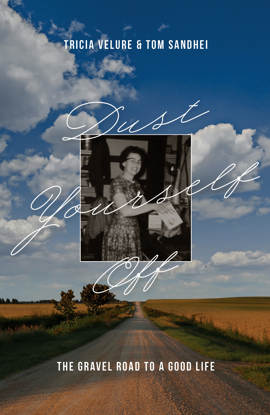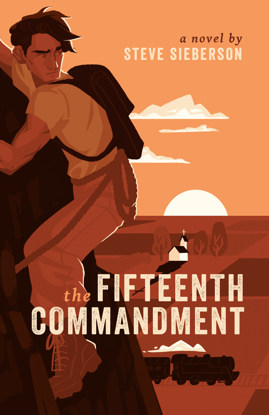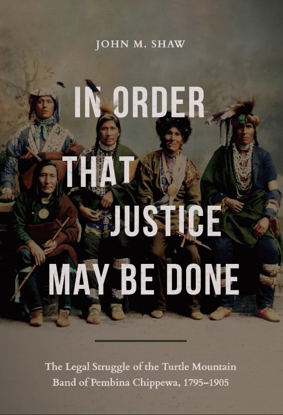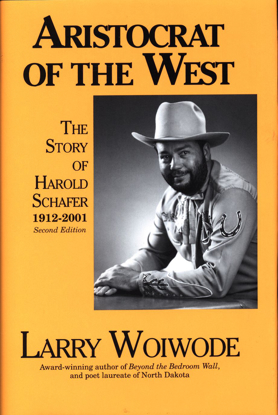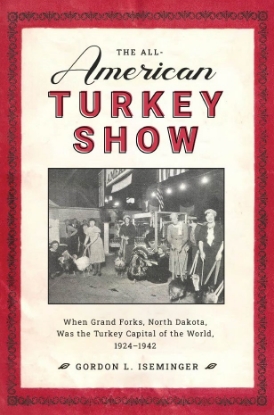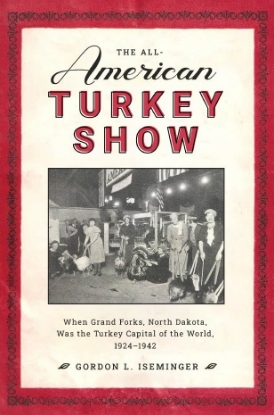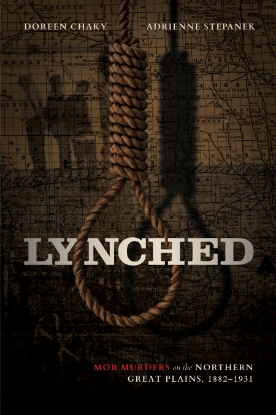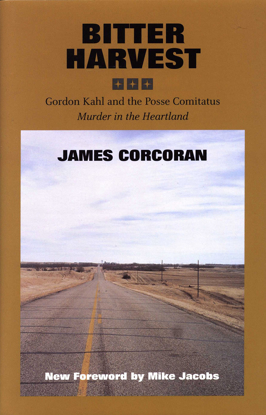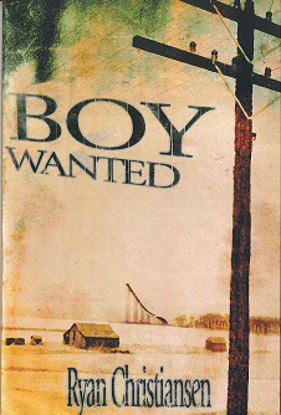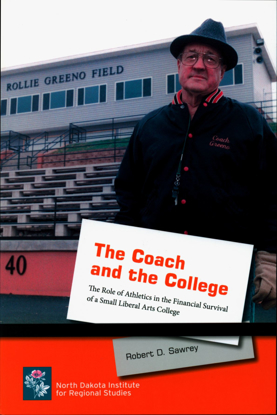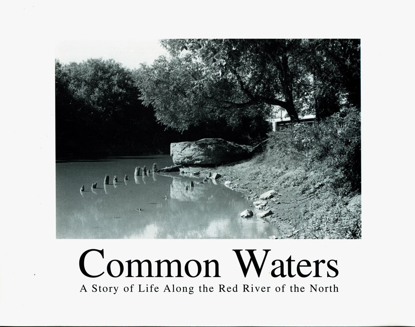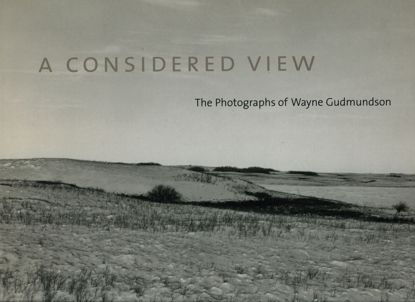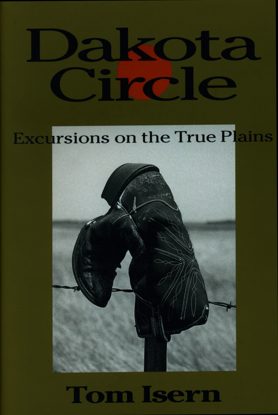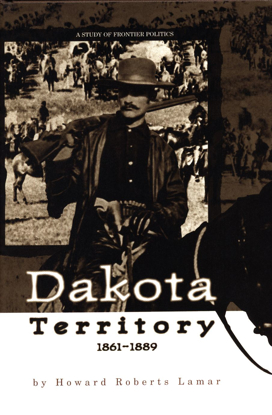All Books
Apple in the Middle
Apple Starkington turned her back on her Native American heritage the moment she was called a racial slur for someone of white and Indian descent, not that she really even knew how to be an Indian in the first place. Too bad the white world doesn’t accept her either. And so begins her quirky habits to gain acceptance. Apple’s name, chosen by her Indian mother on her deathbed, has a double meaning: treasured apple of my eye, but also the negative connotation—a person who is red, or Indian, on the outside, but white on the inside. After her wealthy father gives her the boot one summer, Apple reluctantly agrees to visit her Native American relatives on the Turtle Mountain Indian Reservation in northern North Dakota, for the first time. Apple experiences conflict as she deals with the culture shock of Indian customs and the Native Michif language, while trying to find a connection to her dead mother. She also has to deal with a vengeful Indian man who has a violent, granite-sized chip on his shoulder because he loved her mother in high school but now hates Apple because her mom married a white man. Yet, as Apple meets her Indian relatives this summer, she finds that she just may have found a place to belong. One by one, each character—ranging from age five to eighty-five—teaches her, through wit and wisdom, what it means to be a Native person, but also to be a human being while finding her place in the world. Apple shatters Indian stereotypes and learns what it means to find her place in a world divided by color.
Debut Young Adult Native American novel, by Dawn Quigley. Hardcover. 268 pp.
Winner of the 2018 Moonbeam Children's Book Award for Young Adult Fiction--General and the 2020 American Indian Youth Literature Honors Award
Surrender Dorothy
Surrender Dorothy’s earliest poems were born out of a desire to understand the author's place within the larger context of the Midwest and Kansas, and—thinking beyond borders—the Plains ecoregion.
From the author:
What does it mean to be a child of this particular area, filled as it is with ancient prairie land, its cultural associations, folks espousing “Midwestern Nice,” so much overlooked native wildlife, and acres upon acres of Big Agriculture? I found myself drawn to Wizard of Oz characters as a case study, they being so recognizable to people both inside and outside the region. There were layers of privilege to peel back, along with all of the backyards and pastures I’d come to know since my youth, and moments of thinking deeply about my ancestors (animal, plant, and otherwise) and their relationship with the same land. I needed to know more about that past so I could better understand my present, if we can ever locate such a thing.
My goal as a writer is to faithfully represent the voices and characters and narratives of a particular area. That representation can manifest in any number of ways, and so much of Surrender Dorothy arose within a surrealist vein since its messages related to climate change and apathy have nowhere else to turn. The poems are often dark and stark, but I think I achieved what I set out to do over the course of the poems being written.
About the Poetry of the Plains & Prairies Award:
Every January 17 through March 17, NDSU Press accepts chapbook-length poetry collections about life on the plains and prairies or North America. Surrender Dorothy is the seventh winner of our annual award. The winning collection is copyedited and letterpress printed by the Introduction to Publishing class at North Dakota State University. Each chapbook is hand-assembled and individually numbered. Each POPP Award chapbook is a unique, limited-edition publication.
POPP Award winners to date are:
- 2022 Surrender Dorothy, by Brett Salsbury (Nevada)
- 2021 Prairie Madness, by Katherine Hoerth (Nebraska)
- 2020 A Muddy Kind of Love, by Carolyn A. Dahl (Texas)
- 2019 Harvest Widows, by Nick Bertelson (Iowa)
- 2018 Destiny Manifested, by Bonnie Larson Staiger (North Dakota)
- 2017 Thunderbird, by Denise Lajimodiere (North Dakota)
- 2016 Land of Sunlit Ice, by Larry Woiwode (North Dakota)
Apple in the Middle (pb)
Apple Starkington turned her back on her Native American heritage the moment she was called a racial slur for someone of white and Indian descent, not that she really even knew how to be an Indian in the first place. Too bad the white world doesn’t accept her either. And so begins her quirky habits to gain acceptance. Apple’s name, chosen by her Indian mother on her deathbed, has a double meaning: treasured apple of my eye, but also the negative connotation—a person who is red, or Indian, on the outside, but white on the inside. After her wealthy father gives her the boot one summer, Apple reluctantly agrees to visit her Native American relatives on the Turtle Mountain Indian Reservation in northern North Dakota, for the first time. Apple experiences conflict as she deals with the culture shock of Indian customs and the Native Michif language, while trying to find a connection to her dead mother. She also has to deal with a vengeful Indian man who has a violent, granite-sized chip on his shoulder because he loved her mother in high school but now hates Apple because her mom married a white man. Yet, as Apple meets her Indian relatives this summer, she finds that she just may have found a place to belong. One by one, each character—ranging from age five to eighty-five—teaches her, through wit and wisdom, what it means to be a Native person, but also to be a human being while finding her place in the world. Apple shatters Indian stereotypes and learns what it means to find her place in a world divided by color.
Debut Young Adult Native American novel, by Dawn Quigley. Hardcover. 264 pp.
Winner of the 2018 Moonbeam Children's Book Award for Young Adult Fiction--General and the 2020 American Indian Youth Literature Honors Award
Dust Yourself Off: The Gravel Road to a Good Life
Dust Yourself Off: The Gravel Road to a Good Life is the true story of a farm woman in 1940s/50s North Dakota who recovered from a series of shocks and tragedies – and the surprising ways in which she did that. “This project began because I wanted my kids and grandkids to know their grandmother,” said the book’s co-author Tom Sandhei of his mother, Muriel. “She was a remarkable woman.” After Sandhei took the story as far as he could on his own, he teamed up with Tricia Velure, a personal historian and writer from the neighboring town. “Tom and I unknowingly grew up on farms less than 20 minutes from each other in North Dakota, 30 years apart,” said Velure. “Decades later, we met in the Twin Cities, where we lived 10 minutes apart. We were meant to meet and write this story together!”
Dust Yourself Off chronicles Muriel’s life in Fort Ransom, North Dakota, known as “Little Norway” for its forested hillsides above the Sheyenne River Valley and predominantly Norwegian settlers. Readers follow Muriel and her family through farm life during the settlement period, World War I, Great Depression, World War II, and the 1950s. While the co-authors describe Muriel as a quintessential Norwegian American farm girl in North Dakota, she was forced to leave home at age 19. Death and tragedy visited her regularly in her 20s and 30s, when time and again she challenged the traditional norms of what it meant to be a farm woman in her day. Muriel’s quiet yet bold courage helped create this touching family story, rich in historical details and local color.
Velure never met Muriel, who died at age 82 in 2004, but she calls Muriel a “bonus grandmother” and believes readers will feel the same affinity. “This book will appeal to readers who enjoy farm and small-town stories, Norwegian American history, and inspiring stories of everyday women. If you wish you knew your grandparents’ life story, this is a book for you.”
About the Authors
Tricia Velure is a personal historian who helps elders share their life stories with their families. She grew up on her family’s cattle and small grains farm near Kathryn, North Dakota, and earned degrees in English and history from Valley City State University and a master’s degree in history from North Dakota State University.
Tom Sandhei is a retired school administrator who grew up on his parents’ and grandparents’ farms near Fort Ransom, North Dakota. He graduated from Valley City State College, began teaching, then earned a master’s degree in elementary school administration from North Dakota State University. His career in education spanned almost 40 years. Velure and Sandhei have lived in suburban Minneapolis/St. Paul since the 1990s.
Fifteenth Commandment, The
It is the summer of 1965, and seventeen-year-old Nick Baarda is under pressure from his religious sect to conform to its rigid rules of behavior, including prohibitions on “worldly” activities like dancing and going to movies. On the other hand, Nick and his best friends are determined to enjoy modern life to the fullest, and they devise their own Commandment to give themselves free rein. They also plan to leave town the following year when they graduate from their parochial high school. When a new minister arrives, he makes it clear that he intends to keep the boys firmly under his thumb, and this sets in motion an extended contest of wills. Complicating things is the pastor’s daughter, who becomes Nick’s intellectual soulmate while not reciprocating his romantic overtures. The result for Nick is a roller coaster of infatuation and frustration, while he and the other boys share raucous adventures and deal with relationships, conflict, and calamity. Through it all, Nick wrestles with the quirks and hypocrisy he sees in his religion, and as graduation nears, he is forced to decide whether he will stay or break free.
In Order That Justice May Be Done: The Legal Struggle of the Turtle Mountain Band of Pembina Chippewa, 1795-1905
Tribal lands in tribal hands restrained the pursuit of profit. When the cultural identity of the Turtle Mountain Band of Pembina Chippewa was challenged by European Americans—who conceived of progress in terms of cultivated farmland—a tribal-federal conundrum occurred. Historian John M. Shaw untangles the culturally and legally contested concepts of land and its uses and ownership, providing a dynamic legal genesis of the Turtle Mountain Chippewa and their intentional action for change. Shaw presents a crucial analysis of federal policy and Native American resistance.
“Shaw systematically informs the reader of historical context and lays out the complex cultural influences—the nucleus of an emerging nation—of the Pembina Chippewa, providing unique insights into historical, legal, and political struggles. An overarching theme is the contrast and comparison of Indigenous and Western worldviews relative to international diplomacy. Shaw’s laser focus presents a critical and authentic analysis of social, economic, political, and cultural events that enveloped the Pembina Band of Chippewa and the United States of America.”—Les LaFountain, Tribal Educator and Historian; former Turtle Mountain Band of Chippewa Tribal Council Representative; former Legislative Assistant to the United States Senate Indian Affairs Committee
“In Order That Justice May Be Done is an excellent history of the struggle experienced by the Turtle Mountain Band of Chippewa to gain recognition as a tribe and to gain control of their homeland. The documented efforts of Chief Little Shell and Attorney John Bottineau deserve to be recognized and understood.”—Carol A. Davis, Senior Associate Tribal Nations Research Group; Turtle Mountain Community College Co-founder and Second Interim/Acting TMCC President
LCCN: 2022951183
ISBN: 978-1-946163-56-1
6" x 9"
440 pp., paperback
black & white photos and maps
bibliography and index
Tribal-Federal Relations | History 19th Century | Indian Reservations—Law and Legislation
About the Author: John M. Shaw grew up where George Washington led the Continental Army across the Delaware River and surprised the Hessian garrison at Trenton, New Jersey, on Christmas day, 1776. One of John's earliest childhood memories recalls his parents bundling him up on Christmas mornings to watch the annual reenactment. This tradition sparked his lifelong interest and passion for history, culmininating in an MA in American Indian Studies and a PhD in History, both from The University of Arizona.
In graduate school, a colleague informed John about a compelling microfilm of an eloquent prayer, address, and legal brief on behalf of the Turtle Mountain Band of Pembina Chippewa. Compiled by Métis tribal citizen and attorney John B. Bottineau, these inspiring documents provided a unique Indigenous perspective on the injustices of federal Indian policy. The tribe's legal struggle for land, sovereignty, and justice derived from the power to narrate their own side of the story through articulate chiefs and delegations, confirming that North Dakota's most populace Indigenous community remain a powerful people with a compelling history.
John contributed multiple entries to Making it in America: A Sourcebook on Eminent Ethnic Americans (2000) and The Encyclopedia of United States-American Indian Policy, Relations, and Law (2008), as well as several book reviews for UCLA's American Indian Culture and Research Journal and the New Mexico Historical Review. He has taught Native American and U.S. History courses for the departments of American Indian Studies, American Multicultural Studies, and History at The University of Arizona (1996–2003), Minnesota State University Moorhead (2004–2005), and Portland (Oregon) Community College (2005–present).
Aristocrat of the West
Growing from the bare prairie of western North Dakota, Schafer created an empire as familiar to Americans as the soap on their shelves, which probably was produced by his Gold Seal Company. As a philanthropist Schafer's enthusiasm and optimism brought Theodore Roosevelt's old cow town of Medora from ruin to a premier tourist attraction. And to the country's political leadership he lent a key business associate as U.S. Secretary of the Interior, and a son as governor of the state.
A wonderful story of a great American grown from the eastern plains.
All-American Turkey Show: When Grand Forks, North Dakota, Was the Turkey Capital of the World, 1924-1942, The
The All-American Turkey show, which met in Grand Forks, North Dakota, from 1924 to 1942, brought people from across the contiguous US to the northern plains to exhibit their prize turkeys. The show served multiple purposes, including encouraging farmers to diversify production and increase their incomes by raising turkeys. Mostly farmwives took up the call, managing the farm’s turkey flock; two-thirds of the turkeys exhibited at the shows were raised and exhibited by women. They also attended the Education Sessions at the shows, where they learned how to care for their flocks and to select breeding stock in order to bring their turkeys as close as was humanly possible to the exacting standards adhered to by the show’s judges.
Another purpose of the shows was to encourage consumers to eat more turkey and to eat it throughout the year, not just during the holiday season. In part, to fulfill this purpose, the shows introduced competition in dressed turkeys and boxed and canned turkeys.
Finally, the shows were intended to be truly “All-American” by providing an opportunity for “turkey folk” to gather for a week each year to compete for more awards than were offered at any other poultry show, renew acquaintances, make new friends, and enjoy each other’s company. That the shows succeeded handsomely in this purpose was evidenced by exhibitors from eighteen turkey-producing states and five Canadian provinces.
The All-American Turkey Show was done in by its success. By the eve of World War II, its purposes had been fulfilled and the shows were being held for little reason other than that there seemed to be no graceful way to discontinue them. It was the war, with its shortages of labor, gasoline, and rubber, that brought the All-American Turkey Shows to a merciful end. Shows were suspended for the duration of the war on the assumption they would begin again at war’s end. They did not, and the All-American Turkey Shows passed into history.
ISBN: 978-1-946163-55-4
Page Count: 452
Picture Count: 12-page color photo gallery, 37 black and white images
Index: Yes
Bibiliography: Yes
Hardcover
Publication Date: April 13, 2024
All-American Turkey Show: When Grand Forks, North Dakota, Was the Turkey Capital of the World, 1924-1942, The
The All-American Turkey show, which met in Grand Forks, North Dakota, from 1924 to 1942, brought people from across the contiguous US to the northern plains to exhibit their prize turkeys. The show served multiple purposes, including encouraging farmers to diversify production and increase their incomes by raising turkeys. Mostly farmwives took up the call, managing the farm’s turkey flock; two-thirds of the turkeys exhibited at the shows were raised and exhibited by women. They also attended the Education Sessions at the shows, where they learned how to care for their flocks and to select breeding stock in order to bring their turkeys as close as was humanly possible to the exacting standards adhered to by the show’s judges.
Another purpose of the shows was to encourage consumers to eat more turkey and to eat it throughout the year, not just during the holiday season. In part, to fulfill this purpose, the shows introduced competition in dressed turkeys and boxed and canned turkeys.
Finally, the shows were intended to be truly “All-American” by providing an opportunity for “turkey folk” to gather for a week each year to compete for more awards than were offered at any other poultry show, renew acquaintances, make new friends, and enjoy each other’s company. That the shows succeeded handsomely in this purpose was evidenced by exhibitors from eighteen turkey-producing states and five Canadian provinces.
The All-American Turkey Show was done in by its success. By the eve of World War II, its purposes had been fulfilled and the shows were being held for little reason other than that there seemed to be no graceful way to discontinue them. It was the war, with its shortages of labor, gasoline, and rubber, that brought the All-American Turkey Shows to a merciful end. Shows were suspended for the duration of the war on the assumption they would begin again at war’s end. They did not, and the All-American Turkey Shows passed into history.
ISBN: 978-1-946163-67-7
Page Count: 452
Picture Count: 12-page color photo gallery, 37 black and white images
Index: Yes
Bibiliography: Yes
Paperback
Publication Date: April 13, 2024
Bakken: An Archaeology of an Industrial Landscape
The Bakken oil patch ranks among the great achievements of the contemporary age. The arrival of fracking technology in western North Dakota led to an industrial renaissance that transformed sleepy farm communities into crucial cogs in the global extractive economy. Fracking technology made the area a global destination for roughnecks, petroleum engineers, pipeline “cats,” fishers (who “fish” for tools and other objects accidentally dropped down wells), truck drivers, carpenters, contractors, and electricians as well as journalists, adventure scientists, academic scholars, photographers, and filmmakers. The bustle of heavy industry and a landscape of dramatic contrasts present a magnetic attraction for the adventurous traveler. Pack your camera, your sulfur dioxide sensor, a pair of steel-toed boots, and your flame-resistant Carhartt clothing as you get ready for a unique journey to a frontier landscape forged by industry.
Lynched: Mob Murders on the Northern Great Plains, 1882-1931
With a rope and a mission, like-minded neighbors found lynching to be a simple and efficient way to obtain what they regarded as certain justice.
Northern plains lynch mobs shared a belief that what they did resulted in swift and sure justice, which the established courts would not or could not provide. Juries might be reluctant to impose the death penalty, and if a suspect were tried, found guilty, and sentenced to life in prison, they might be prematurely pardoned. Perpetrators might successfully evade punishment by using insanity pleas. With a rope and a mission, like-minded neighbors found lynching a simple and efficient way to obtain what they regarded as certain justice.
The distrust many citizens had of the legal profession seemed rooted in the perception that lawyers and the complicated law they practiced appeared to offer more justice to criminals than to crime victims. That distrust extended to jurors considered too soft-hearted to mete out appropriate punishment. Do-it-yourself justice among the lynch mobs seemed fairer and quicker than waiting for what they considered unreliable juries, lawyers, and judges. Perhaps those who disparaged lawyers and the rule of law—and sought to bypass them with a rope—simply did not understand the complexities of American jurisprudence. Based on centuries-old English common law, the court system was malleable and did respond to changing ideas and mores, but these changes came slowly. The people who made up the mobs were unwilling to patiently await such incremental adjustments.
Lynched examines the events surrounding, and the media portrayal of, nine mob murders that resulted in eleven deaths on the northern Great Plains from 1882 to 1931. Revealing a disturbing part of history, Lynched aims at uncovering the stories of these lynchings while shedding light on the volatile mentality of the communities where such injustice happened.
ISBN: 978-1-946163-59-2
Page Count: 320
Picture Count: 29 black and white images
Index: Yes
Bibiliography: Yes
Hardcover
Publication Date: April 13, 2024
Bitter Harvest
James Corcoran tells the story of Gordon Kahl and the Posse Comitatus, using captivating narrative with vivid imagery. Sunday, February 13, 1983, was a sunny day in Medina, North Dakota--a seemingly peaceful church-going winter day. But hate politics was broiling in secret locations and the Heartland provided cover for those who wanted to take the law into their own hands. "Something terrible, and terribly important, was taking place," writes Corcoran. Ever a page-turner, reflect again on this story of violence and how a group of people can construct an alternative version of the law and the truth.
Boy Wanted
Ryan Christiansen's tale of a twelve-year-old who answers an ad saying, "Boy Wanted," takes the reader to the disturbed depths of the abandoned and vulnerable, those immobilized by the fear that their own behavior is what made a predator behave badly. When Alvi's father, a failed auctioneer in Red River, North Dakota, becomes tangled up in bootlegging and leaves town during the Great Depression, Alvi and his mother find themselves in dire straits. Hiring himself out for work, Alvi helps an old man build a ski jump along the river. Alvi learns about his Norwegian antecedents and ski jumps and the young girl, Rose, and other things less welcomed.
ISBN # 978-0-911042-83-2
Copyright 2015
Adult novel.
123 pages
Paperback.
Clean Daughter: A Cross-Continental Memoir, The
Any marriage is complicated, but one where two people grow up speaking different languages and abiding by different cultural codes presents unique challenges. Insert a demanding father-in-law, a healthy man who inexplicably ends his life by means of legalized euthanasia.
When Jill Kandel married Johan, a man from the Netherlands, she never imagined the influence her father-in-law, Izaak, would hold over her life. Beneath his calm demeanor and clerical garb, Izaak carried the wounds of growing up in the Nazi-occupied Netherlands. Childhood chaos led him to become a man who had all the answers. For everyone. Except himself.
Izaak ended his own life—while still a healthy man—using legalized euthanasia in the Netherlands. The long tumultuous relationship between daughter-in-law and father-in-law was over. But Kandel couldn’t move on. Ten years later, still exhausted by thoughts of Izaak, she returned to the Netherlands to search for understanding.
The Clean Daughter is a story about building family across cultural, linguistic, and geographical divides. The complicated ways families both destroy and heal one another underpin Kandel’s story of a family held together by tenacity, curiosity, and courage.
Coach and the College, The
Amidst the cheers, pride, tailgating and excitement of college athletics lurks for many Americans the discomforting sense that many colleges have abandoned their academic integrity and proper relationship between academics and athletics. Located on the rolling farmland of North Dakota sits Jamestown College, whose experience with athletics offers a stunningly different perspective of how athletics and academics can work together to promote the general well-being of the institution. "The Coach and the College" tells the story of how the amazing competitive success of teams coached by Rollie Greeno facilitated the recruitment to Jamestown College of hundreds of student-athletes who paid tuition and fees that, along with the crucial work of key administrators and dedicated employees and the financial generosity of a handful of alumni, kept the college open during the financially difficult 1980s and 1990s. To a significant extent, then, Jamestown College owes its ability to have created and to maintain a mutually beneficial relationship between athletics and the institution's academic mission.
by Robert D. Sawrey.
ISBN #978-0-911042-77-1.
Copyright 2013.
224 pages. Softcover.
Common Waters - A Story of Life Along the Red River of the North
Most recent of the "Prairie Document Series;" a photographic essay that demonstrates the power of the river and its influences on the lives of all living by its shores.
Edited by Wayne Gudmundson.
Considered View, A
This publication documents nearly four decades of the North Dakota artist's work. Gudmundson, whose heritage is Icelandic, has been photographing the American prairie plains since the late 1970s with the aim of recording the marks of human intervention in this often hostile yet sublimely beautiful land.
By: Wayne Gudmundson.
ISBN # 978-0-911042-67-2
Copyright 2007
Hardcover
103 pages
Dacotah Territory: A 10 Year Anthology
A collection of poems originally published in Dacotah Territory Magazine
Edited by Mark Vinz and Grayce Ray
Only a few copies remain of this celebration of 1970s literary culture on the northern plains. The book begins with essays by Mark Vinz, Joseph Richardson, Robert Schuler, and Grayce Ray--the movers and shakers whose passion pushed them to edit, publish, and distribute poetry and prose. Illustrations and photographs by Bernel Bayliss, Leo Kim, James Ver Doorn, Carol Smith, Linda Hanson, and more--first seen in issues of Dacotah Territory--are interspersed throughout the collection. All of the poems in this collection are extracted from previous issues of Dacotah Territory Magazine. The poems are presented alphabetically by author, and the appendix lists the poems in the order they originally appeared, by issue. Poets include Robert Bly, Alvin Greenberg, Patricia Hampl, Joy Harjo, Margaret Hasse, Dale Jacobson, Deborah Keenan, Ted Kooser, Richard Lyons, Thomas McGrath, and many more.
Dakota Circle
Dakota Circle is a wry, sometimes humorous description of the people and things that make up the Great Plains. Includes the notorious "You Must be from N.D." list of regional virtues and idiosyncrasies.
By Tom Isern.
ISBN # 0-911042-53-9
Copyright 2000
203 pages.
Hardcover.
Dakota Territory
First published some four decades ago. This political history of the Dakotas at their infancy offers readers a powerful picture of the politicians who carved a government out of a frontier and turned it into not one, but two huge states.
By Howard Lamar
ISBN 0-911042-47-4
Copyright 1997
Hardcover
336 pages
























